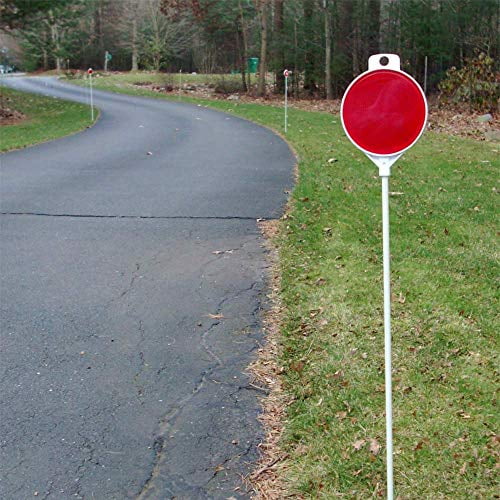
Center line markings should also be placed on all rural arterials and collectors that have a traveled way of 18 feet or more in width and an ADT of 3,000 vehicles per day or greater. Center line markings shall also be placed on all paved two-way streets or highways that have three or more lanes for moving motor vehicle traffic.ġ0 Center line markings should be placed on paved urban arterials and collectors that have a traveled way of 20 feet or more in width and an ADT of 4,000 vehicles per day or greater.

The UVC can be obtained from the National Committee on Uniform Traffic Laws and Ordinances at the address shown on Page i.Ġ9 Center line markings shall be placed on all paved urban arterials and collectors that have a traveled way of 20 feet or more in width and an ADT of 6,000 vehicles per day or greater.
Pavement reflectors code#


Pavement and Curb Markings Section 3B.01 Yellow Center Line Pavement Markings and WarrantsĠ1 Center line pavement markings, when used, shall be the pavement markings used to delineate the separation of traffic lanes that have opposite directions of travel on a roadway and shall be yellow.Ġ2 Center line pavement markings may be placed at a location that is not the geometric center of the roadway.Ġ3 On roadways without continuous center line pavement markings, short sections may be marked with center line pavement markings to control the position of traffic at specific locations, such as around curves, over hills, on approaches to grade crossings, at grade crossings, and at bridges.Ġ4 The center line markings on two-lane, two-way roadways shall be one of the following as shown in Figure 3B-1:įigure 3B-1 Examples of Two-Lane, Two-Way Marking Applications The retroreflective element that provides wet and dry reflectance and long-term nighttime visibility is available in white, yellow/amber, red, blue or green.Back to Current Edition | Back to Part 3 Table of Contents 2009 Edition Chapter 3B. The marker bodies are produced of an engineered thermoplastic that gives maximum impact resistance and weatherability. The markers are designed to provide highly effective, long-term nighttime visibility in non-snow plow regions.
Pavement reflectors series#
Durable and highly-reflective 3M raised pavement markers are used for longitudinal lines and gore markings on asphalt or concrete surfaces.ģM™ Raised Pavement Markers Series 290 are designed for application on asphalt and Portland cement concrete road surfaces.


 0 kommentar(er)
0 kommentar(er)
